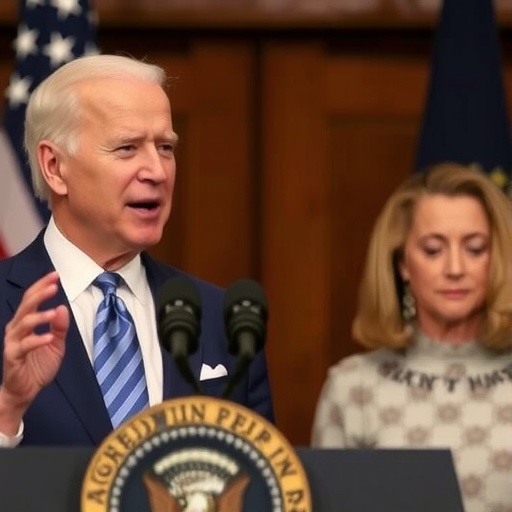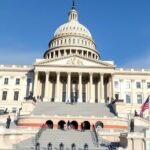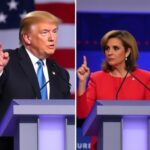Biden Administration Unveils Bold Economic Policies to Tackle Inflation and Ignite Growth Through Infrastructure and Education
In a sweeping move to revitalize the U.S. economy, the Biden Administration today announced a comprehensive set of economic policies designed to combat persistent inflation while fostering long-term growth. At the heart of these initiatives are massive investments in infrastructure and education, projected to inject over $500 billion into key sectors over the next five years. This announcement comes at a critical juncture, as inflation rates hover around 3.2% according to the latest Bureau of Labor Statistics data, squeezing household budgets and slowing consumer spending.
President Joe Biden, speaking from the White House Rose Garden, emphasized the urgency of these measures: “We’re not just patching holes in our roads and schools; we’re building a foundation for American prosperity that will outlast any economic storm.” The policies build on the successes of the 2021 Bipartisan Infrastructure Law but expand into targeted education reforms, aiming to address workforce shortages in high-demand industries like clean energy and technology.
Infrastructure Overhaul Promises Jobs and Modernization
The cornerstone of the Biden Administration‘s economic policies is a renewed focus on infrastructure, with $300 billion allocated for projects ranging from high-speed rail corridors to resilient water systems. This investment is expected to create over 2 million jobs in construction and related fields, according to preliminary estimates from the Department of Transportation. In states like Pennsylvania and Michigan—battlegrounds in recent elections—these projects could mean thousands of local hires, directly addressing unemployment rates that linger above the national average of 4.1%.
Key initiatives include upgrading the nation’s aging bridges and highways, where the American Society of Civil Engineers recently graded U.S. infrastructure a C- overall. For instance, a $50 billion broadband expansion plan will bring high-speed internet to rural areas, bridging the digital divide that has left 14 million Americans offline. Treasury Secretary Janet Yellen highlighted the multiplier effect: “Every dollar invested in infrastructure generates up to $1.50 in economic activity, fueling growth without exacerbating inflation.”
Environmental sustainability is woven into these plans, with 40% of funds earmarked for green infrastructure like electric vehicle charging networks and flood-resistant urban designs. This aligns with the administration’s climate goals, potentially reducing carbon emissions by 15% in transportation sectors by 2030. Critics, however, point to potential cost overruns; the Congressional Budget Office warns that without strict oversight, these projects could balloon to $400 billion, straining federal budgets amid rising interest rates.
Local leaders are already buzzing. New York Governor Kathy Hochul praised the policies in a statement: “This is a lifeline for our crumbling subways and ports, ensuring New York remains an economic powerhouse.” Similarly, in California, where wildfires have exposed vulnerabilities in power grids, Governor Gavin Newsom called it “a game-changer for resilient communities.” These investments aren’t just about steel and concrete; they’re about connecting people to opportunities, reducing commute times, and lowering energy costs for families.
Education Investments Target Skills Gap and Future Innovation
Complementing the infrastructure push, the Biden Administration’s economic policies allocate $200 billion to education, focusing on vocational training, community colleges, and STEM programs to prepare workers for tomorrow’s economy. With automation displacing 800,000 manufacturing jobs annually, per a McKinsey Global Institute report, these reforms aim to upskill 10 million Americans by 2028. Free community college tuition for high-demand fields like cybersecurity and renewable energy is a flagship proposal, potentially increasing enrollment by 20%, based on models from states like Tennessee’s existing program.
Education Secretary Miguel Cardona elaborated during a press briefing: “We’re investing in people, not just programs. By forgiving $10,000 in student debt for public service workers and expanding Pell Grants, we’re removing barriers to opportunity.” This builds on the administration’s previous student loan forgiveness efforts, which have already canceled $160 billion for 4.4 million borrowers. The policies also include $50 billion for K-12 infrastructure, modernizing schools in underserved districts where facilities score below national averages.
Statistics underscore the need: Only 35% of U.S. adults hold a bachelor’s degree, compared to 50% in peer nations like Canada. By partnering with tech giants like Google and Microsoft for apprenticeships, the initiative could close this gap, boosting GDP by an estimated 1.5% through a more productive workforce. In rural Appalachia, for example, new coding bootcamps funded under this plan are projected to create 50,000 tech jobs, transforming regions hit hard by coal’s decline.
However, educators warn of implementation challenges. The National Education Association’s president, Becky Pringle, noted: “While the funding is welcome, we need more teachers—shortages affect 300,000 classrooms nationwide.” The policies address this with incentives like $20,000 signing bonuses for educators in high-need areas, but success will hinge on state-level buy-in and avoiding bureaucratic delays.
Inflation-Fighting Measures Balance Growth with Price Stability
Addressing inflation head-on, the Biden Administration’s economic policies incorporate targeted interventions to stabilize prices without stifling expansion. A $100 billion supply chain resilience fund will diversify manufacturing away from overseas dependencies, potentially lowering costs for essentials like semiconductors and pharmaceuticals. The Federal Reserve’s recent rate hikes to 5.25% have cooled inflation from a 9.1% peak in 2022, but the administration argues fiscal tools are essential to sustain this progress.
Economic advisor Cecilia Rouse explained: “These policies are pro-growth and anti-inflation. By investing in domestic production, we’re reducing import reliance, which drove 40% of last year’s price surges.” Tax credits for small businesses adopting energy-efficient practices could save companies 15% on operational costs, per Energy Department projections, while a cap on insulin prices at $35 per month—already enacted—extends to other drugs, easing healthcare burdens for 28 million Medicare enrollees.
The broader economic context is promising yet precarious. GDP grew 2.5% in Q3 2023, outpacing many G7 nations, but consumer confidence remains shaky at 68 on the Conference Board index. These policies aim to thread the needle, with the Council of Economic Advisers forecasting a 0.5% inflation drop by mid-2024 if fully implemented. Dissent comes from Republican lawmakers, who decry the spending as “reckless,” with House Speaker Kevin McCarthy stating: “This is more big government, not real relief for working families.”
Global factors, like the Ukraine conflict’s impact on energy prices, add complexity. The administration’s push for domestic oil production, alongside renewables, seeks to insulate the U.S. from volatility, potentially stabilizing gas prices below $3.50 per gallon nationwide.
Stakeholder Reactions Highlight Bipartisan Potential and Hurdles
Reactions to the Biden Administration’s economic policies are pouring in from across the spectrum, revealing both enthusiasm and skepticism. Business groups like the U.S. Chamber of Commerce applauded the infrastructure focus: “This will unlock $1 trillion in private investment, creating a ripple effect for jobs and innovation,” said CEO Suzanne Clark. Labor unions, including the AFL-CIO, hailed the education components for prioritizing workers’ rights, with President Liz Shuler adding: “Finally, policies that put people over profits.”
Economists are cautiously optimistic. Nobel laureate Paul Krugman tweeted: “Smart, targeted spending like this could be the antidote to stagflation fears.” Yet, conservative think tanks like the Heritage Foundation criticize the scale: “At a time of $34 trillion in national debt, this risks crowding out private sector growth.” Polling from Pew Research shows 55% public approval for infrastructure spending, but only 42% for education expansions, citing concerns over equity in distribution.
On Capitol Hill, the policies face a divided Congress. Democrats push for swift passage via reconciliation, while Republicans demand offsets through spending cuts. Bipartisan support may emerge on infrastructure, given its track record—the 2021 law passed with 19 GOP votes. Key swing-state senators like Ohio’s J.D. Vance have signaled openness to job-creating elements, potentially paving the way for compromise.
International observers note the U.S. move could inspire allies. EU Commission President Ursula von der Leyen commented: “America’s infrastructure renaissance sets a benchmark for global recovery efforts.” Domestically, minority communities stand to benefit disproportionately; the NAACP estimates 30% of new jobs will go to underrepresented groups, addressing systemic inequalities in employment.
Long-Term Impacts: Shaping America’s Economic Horizon
Looking ahead, the Biden Administration’s economic policies could redefine the U.S. landscape for decades, with projections from the Brookings Institution suggesting a 3% annual GDP boost through enhanced productivity. Infrastructure improvements alone might shave 10% off logistics costs, benefiting exporters and consumers alike. In education, closing the skills gap could elevate wages by 12% for participants, per Labor Department models, fostering inclusive growth.
Challenges remain, including funding sustainability amid fiscal pressures and geopolitical uncertainties. The administration plans quarterly progress reports, starting with a 2024 summit on implementation. For businesses, this means opportunities in green tech bids; for families, relief from rising costs and access to better jobs. As Biden wraps up his term, these policies may cement his legacy as an economic architect, positioning the U.S. to lead in a post-pandemic world.
Stakeholders urge action: “The time for debate is over; implementation starts now,” said Commerce Secretary Gina Raimondo. With congressional debates slated for next month, the path forward will test the resilience of these ambitious visions.










